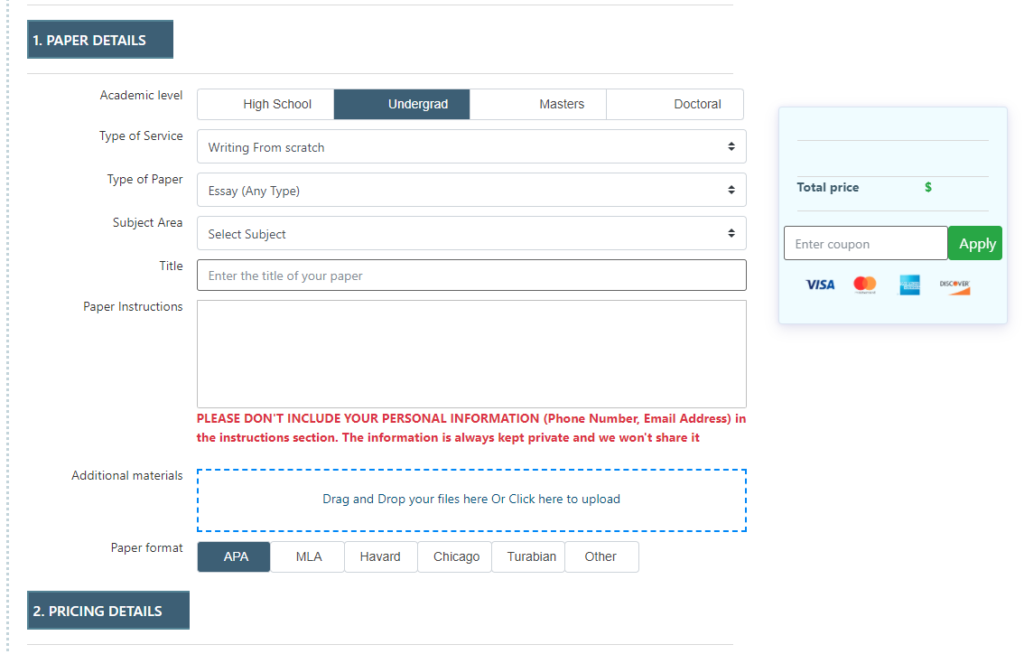Management Decision Making
Assessment :
This assessment will assess learning outcomes (a and b).
(a) Identify objectively the nature of the problem/opportunity facing the organisation
(b) Apply a range of qualitative and quantitative problem solving techniques to reach reasoned and balanced recommendations about operational activities
You must chose one (1) of the following statements statements (A) and analyse it using the 7 stage Checkland Soft Systems Methodology (SSM) in the Mode 1. You can use the original Checkland constructions and mnemonics (CATWOE) for this analysis or the Midgely& Reynolds (2001) mnemonic (BATWOVE) as appropriate.
You MUST state your interpretation of PEArL (Stowell, 2009) and your FMA (Checkland& Howell, 1985) to help validate your research process.
Remember that PEArL refers to explicitly identifying in the conduct of your research the following:
P €“ participants €“ who was involved/why/for what reason/who was excluded€¦
E €“ engagement €“ how will the P engage? Who is and is not a P? What are the external factors shaping engagement?
A €“ authority €“ what is the power’ associated with P? (resources? Reputation? Voice? etc). Are there any external influences (e.g. political)?Are some methods of E better than others?(i.e. do they have internal and external recognition)?
r €“ relationships €“ what are the key elements of power between the P? How are P managed and by whom?
L €“ learning €“ what are the intended and actual outcomes of the(your) intervention? What is the manager-as-analyst view of how this was achieved and who has ownership of these outcomes?
Similarly, FMA refers to stating the (F)framework of ideas that will be used in your work, what the (M)methodology of enquiry will be used in your work and what the (A)areas for concern are within the focus of your work. Stating these guiding framework elements, will make it clearer for a reviewer of the work and aid in its recoverability.
Word count for this submission is 2500 words. It is expected that you will evidence your awareness and understanding of the literature and best practice in other areas of management decision making within this assessment, to support your discussions about how individuals and groups make decisions within your chosen problem statement context.
problem statements:
A) The University wishes to increase the value of its degrees to its students’
In all problem statements €“ your task is to compile a referenced and detailed management report directed to the Head of Management Centre (for A), which proposes a reasoned set of recommendations for clarifying and achieving the goal outlined by the problem statement under analysis, based upon an application of the holistic soft systems methodology (Mode 1).
Assessment criteria are listed below and your report should (as a minimum) include:
€¢ An outline of your rich picture(s) (as many or as few as you view appropriate) to fully present the situation as it is known and understood. This would also be supported by a clear research strategy and research methodology(ies) outlining and justifying your approach to generating these pictures. (Do not forget to clearly articulate your research methodology and your data collection within your report and this is NOT a list of the research data collection tools you used).
€¢ Full discussion of the key stages used in your application of SSM (Mode 1 or mode 2) €“ including any holons you generate.
€¢ Two Proposed conceptual’ systems to help evaluate the problem issue(s) identified.
€¢ A consideration of the investment, risk, resource and capability issues of one of these proposed notional/conceptual systems €“ given the information presented and gathered by you and your research into the problem statement / area.
€¢ An outline of implementation options and an interventions process and schedule likely to be required by your developed conceptual model (this may for example include the time schedule of actions or other task list).
€¢ A consideration of the cultural feasibility and/or desirability of your developed conceptual model (e.g.what barriers/ issues do you feel may arise when change is implemented?).(NOTE €“ your materials from Organisational Change (44214) will help you to achieve this).
€¢ Any aIDitional information and understanding which draws upon the range of decision making theories you are familiar with and where they will inform the operational and strategic considerations / implications of your report.
My assignment requirements- Management Decision Making
1. The words of the report are 2500 words.
2. I choose a problem statement- The wish of the University to increase the value of its degrees to its students’. Moreover, you need to make a questionnaire in appendix. The questionnaire should have 10 questions to ask students. (some questions are listed as example at the end)
3. Ensure you explore all the stages of Mode 1 in your analysis. Ensure you have sufficient hard and soft data to underpin your analysis- this includes ensuring you have accessed (for example) all staff relevant to contributing to your understanding of the problem domain.
4. Ensure you use a report format. Ensure use PEArL and FMA- and detail your sampling methodology. Use an executive summary correctly.
5. Ensure you critically evaluate the recommendations that emerged from your comparative discussion reality with the identified conceptual model steps. This is a significant historic weakness.
Write this report as the following layout and use the books I listed in paragraphs and the reference section;
the whole report should be write about: using tools in decision making to analysis a university’s external environment(Mode 12, SSM); make interviews to collect relative data; then analysis the factors affect the university after implemented the wish of the University to increase the value of its degrees to its students’; find out the advantages and disadvantages if implemented the wish of the University to increase the value of its degrees to its students ; conclusion and give recommendations(lack of internal environment analysis- individual);
you should offer some pictures or tables in the report;
the report should consider: analysis the Problematic Situation: Identifying the Situation; Developing the Rich Picture
Systemic Thinking about the Real World
1. Selecting perspectives and building root definitions’
a)The 1st C.A.T.W.O.E
2. Developing a Conceptual Model of the Change System
b)The 2nd C.A.T.W.O.E
2. Developing a Conceptual Model of the Change System
3. The Five E’s
Comparing the Models with the Real-World Situation
1. Structured Questioning
2.Unstructured Questioning
3. Further Discussion
Proposed layout:
Execuative Sunnary: Remember to only identify: Aims/Methods/Outcomes€”in no more than one paragraph (100-200 words)
(In this section, it can write about:
Aim: The University wants to make a decision of whether they should increase the
value of its degrees to its students. The university wants do this because: they may
want their subjects more professional than others; they may want attracts students
with high quality of teaching, ect.
Make sure one paragraph and 200 words approx)
Contents:
( Exacutive summary; Table of content; Introduction; Research methodology; Mode 1
of SSM; Questionnaire findings; Conclusion; Recommendations; )
Introduction:
Write about there is one methodological example of soft systems thinking is the Soft
Systems Methodology. This report will give relevant analysis. Then, to make a
conclusion about whether it should implement increase the value of its
degrees to its students’. At last, it should offer recommendations.
book of Pownall , I (2011), Effective Decision making:
. (200 words approx)
Research Methodology:
(Write about:
1. this report investigate the statement problem €“ the wish of the University to increase the value of its degrees to its students , applying Mode 1 of SSM.
1. PEArL:
2. FMA:
Mode 1 of SSM:
SSM structure:
Step 1
Step 2: Rich Picture(ensure you have sufficient breadth of data to have confidence in your presented interpretation).
Step 3: CATWOE and Root Definition. You need 2 root definitions.
Step 4: Conceptual Model. You need 2 conceptual models. Don’t forget the 5Es and the associated data indicators you would gather data on.
Step 5: Comparative discussion of one of your conceptual models with your reality (as presented in step 1 and step 2. This may be in the form of a discussion/comparative table)
Step 6: Agenda for Action- identification (and qualification/ justification from the preceding steps) of actions you feel could be implemented to improve the problem statement.
Step 7: This is the reasoned recommendation part of the work (and the third assessment criteria) €“ that your actions from step 6 consider risk, resourcing, capability needs and that you have considered how you might deliver these changes (e.g. timeframe( the interventions process)) and if there is a particular implementation method you feel appropriate (you can think about Organisational Change and the 4 methods of change management discussed there). There may also be changes you consider because of difficulties of individual and group decision making in your recommendations (e.g. heuristics, conformity, groupthink etc).
(It can write about: choose most of the following to write
1. Introduce SSM: Soft Systems Methodology (SSM) is the approach€¦ SSM is split into two modes, Mode 1 and Mode 2. This report will use Mode 1.
2.what is mode 1′, the aim, methods, and importance in decision making. Reference 5.4 Checkland’s SSM-Mode 1′, book of Pownall , I (2011), Effective Decision making
analyse it using the 7 stage Checkland Soft Systems Methodology (SSM) in the Mode 1. The aim from this approach is to€¦ (understand the problem involved within the specified area); and develop a reasoned set of recommendations, in order to overcome any potential problems.
3. Why use Mode 1 of SSM help to make a decision. The decision is whether implement the wish of the University to increase the value of its degrees to its students. The Mode 1 of SSM focuses on analysis the external environment of the organisation. So that it can help to analysis the external of the university. It can find out the advantages and disadvantages if implemented the decision.
4.Mode 1 has 7 steps: Do not just copy these sentences, consider these things in the university if implemented The wish of the University to increase the value of its degrees to its students’
Step1: identify€¦domain. In this report, €¦
Step 2: €¦
Step 3: €¦
Step 4: €¦
Step 5: €¦
Step 6: €¦
Step 7: €¦
It can be analysis the Problematic Situation: Identifying the Situation; Developing the Rich Picture
Systemic Thinking about the Real World
1. Selecting perspectives and building root definitions’
a)The 1st C.A.T.W.O.E
2. Developing a Conceptual Model of the Change System
b)The 2nd C.A.T.W.O.E
2. Developing a Conceptual Model of the Change System
3. The Five E’s
Comparing the Models with the Real-World Situation
1. Structured Questioning
2.Unstructured Questioning
3. Further Discussion )
Questionnaire findings:
Make a decision should look at both qualitative context and quantitative context.
An understanding of the reflective skills necessary for effective decision making; and also an insight into how to better manage; write in both qualitative context and quantitative context.
Qualitative context: (trying better to understand people)
Write about: brief describe on what qualitative context’ focus on; importance in decision making;
Quantitative context: (trying better to work with data and numbers)
Indicidual decision making chapter 6, Pownall , I (2011), Effective Decision making’
Group dynamic of decision making chapter 7, Pownall , I (2011), Effective Decision making’
Inherent bias and limits of individuals involved in decision making in chapter 6 of Pownall , I (2011), Effective Decision making’
It discuss how a group dynamic can also strongly influence the independence of both the decision making process and its outcomes in chapter 7 of Pownall , I (2011), Effective Decision making’
Organizational influences are apparent in both individual and group decision making activities, as they evolve and change in an interdependent fasion with them. In the book: Pownall , I (2011), Effective Decision making’
Conclusion:
Recommendations:
€¦
The Mode 1 of SSM just focus the external environment in an organisation, it should consider the internal environment(individuals) in make a decision as well.
References :
You can find books about:
Business analysis
Enterprise modelling
Hard systems
Holism
List of thought processes
Structured Systems Analysis and Design Method
Systems dynamics
Systems thinking
You must use:
Pownall , I (2011), Effective Decision making- An Introduction
For quantitative analysis: Anderson D.R., Sweeney D.J., Williams T.A. and Wisniewski M. (2009),’An introduction to Management Science’, Cengage Learning. Teale, M., Dispenza, V., Flynn, J. and Currie, D., (2003),’ Management Decision Making €“ towards an integrative approach’, FT Prentice Hall
Equivalent Reading: (you can use some of them)
Jennings, D. and Wattam, S., (1998),’Decision Making: An integrated Approach, Financial Times/Pitman, 2nd ed
Morris, C., (2008),Quantitative Approaches in Business Studies’, 7th Edition, Pearson
Oakshott, L.,(2009),’Essential quantitative methods for Business, Management and Finance’, Palgrave.
Wisniekski, M., (2009),’Quantitative methods for Decision Makers’, 5th Edition, FT Prentice Hall.
Adair J, (2010), Decision Making and Problem Solving Strategies, 2nd edition, Koogan Page
Further Reading:
VerMeulen P.A.M and Curseu P.L.(2008),’Entrepreneurial strategic decision making’, Edward Elgar
Bazerman, M.H., (2006),’Judgement in Managerial Decision making’, Wiley Press
Checkland, P., (1999),’ Systems thinking, systems practice’, Wiley.
Corrigan R (2007), Digital Decision Making, Springer
David, L., Newman, P. and Price, R., (1999),’Decision Making in Organisations’, Financial Times/Pitman
Edwards, J.S. and Finlay, P.N.,(1997),’Decision making with computers: the spreadsheet and beyond’, Pitman
Hanke, J. E. and Reitsche, A. G. (1998), Business Forecasting’, 6th Edition, Prentice Hall
Monahan, G.,(2000).’Management Decision Making’, Cambridge Press
Pecar, B.,(1994),’Business forecasting for management’, McGraw Hill
Shearer, P.,(1994),’Business Forecasting and planning’, Prentice Hall
Summer, M.,(1998),’Analyzing Operations in Business’, Quorum Books
VanGundy, A. B., (1998), Techniques of structured problem solving’, 2nd edition, VN Reinhold.
Waters, D.,(1998),’Essential quantitative methods €“ a guide for business’, AIDison-Wesley
Zikmund, W. G., (2003),’Business Research Methods’, Thomson, South Western
Midgley, G. and M. Reynolds (2001). Operational Research and Environmental
Management: A New Agenda. Birmingham, Operational Research Society.
OR:
1. Checkland, Peter B. & Poulter, J. (2006) Learning for Action: A short definitive account of Soft Systems Methodology and its use for Practitioners, teachers and Students, Wiley, Chichester. ISBN 0-470-02554-9
2. Checkland, Peter B. Systems Thinking, Systems Practice, John Wiley & Sons Ltd. 1981, 1998. ISBN 0-471-98606-2
3. Wilson, Brian Systems: Concepts, Methodologies and Applications, John Wiley & Sons Ltd. 1984, 1990. ISBN 0-471-92716-3
4. Checkland, Peter B. and Scholes, J. Soft Systems Methodology in Action, John Wiley & Sons Ltd. 1990. ISBN 0-471-92768-6 €“ Preface
5. Checkland, Peter B. (2000). Soft Systems Methodology: A thirty year retrospective. Systems Research and Behavioral Science, 17, 11€“58.
6. Checkland, Peter B. (2001) Soft Systems Methodology, in J. Rosenhead and J. Mingers (eds), Rational Analysis for a Problematic World Revisited. Chichester: Wiley
7. Gregory, Frank Hutson (1992) Cause, Effect, Efficiency & Soft Systems Models. Warwick Business School Research Paper No. 42. Later published in Journal of the Operational Research Society (1993) 44 (4), pp 149-168
8. Business Learning Archive. Chris Jarvis for the BOLA Project. Retrieved 2009-04-09.
9. Probert, S. K. (1993) Logic and conceptual modelling in Soft Systems Methodology. Proceedings of the Conference on the Theory, Use and Integrative Aspects of IS Methodologies. British Computer Society Information Systems Methodologies Specialist Interest Group
10. Checkland, Peter B. & Holwell, Sue (1998) Information, Systems and Information Systems. John Wiley & Sons, Chichester.
11. Curtis, Graham Business Information Systems. Second Edition. AIDison-Wesley Ltd. 1995.
15
Case Vignette €“ Elliot
The Clinical Project Paper involves a review of a case vignette and completion of a project with four different sections that will be worked on throughout the course and will be submitted all together in Module 7. Your Clinical Project Paper consists of four sections, and Part 3 will be submitted for this assignment.
Part 3: Intake Report & Treatment Plan (4 pages)
1. You will analyze your selected case vignette to develop an Intake Report,which includes a detailed Treatment Plan. utilize the Intake Report Template.
2. Complete the following sections on the Intake Report Template:
Identifying Information, Presenting Concern(s), Situational Stressors, Mental Status Exam/Observations (Symptoms of Impaired Functioning), Client’s Strengths and Assets, Diagnosis (on all 5 axes), Differential Diagnosis, Theory-Based Case Conceptualization, and Treatment Plan.
This section of the Clinical Project Paper should be an approximately 4-page Microsoft Word document, and APA style should be used to cite all references. Name your assignment as
Assignment 3 Grading Criteria: Proficient Maximum Points
Analyze case to complete the Intake Report Template section: Identifying Information.
CO: 3 The Identifying Information section of the Intake Report was clear, complete and correct. Several details were drawn from the case. 12 pts.
Analyze case to complete the Intake Report Template section: Presenting Concern(s).
CO: 3 The Presenting Concern(s) section of the Intake Report was clear, complete and correct. Several details were drawn from the case. 12 pts.
Analyze case to complete the Intake Report Template section: Situational Stressors.
CO: 3 The Situational Stressors section of the Intake Report was clear, complete and correct. Several details were drawn from the case. 12 pts.
Analyze case to complete the Intake Report Template section: Mental Status Exam/Observations (Symptoms of Impaired Functioning).
CO: 3 The Mental Status Exam/Observations section of the Intake Report was clear, complete and correct. Included at least 6 components from the options listed in the Mental Status Exam section of the template. 12 pts.
Analyze case to complete the Intake Report Template section: Client’s Strengths and Assets.
CO: 3 The Client’s Strengths and Assets section of the Intake Report was clear, complete and correct. Several details were drawn from the case. 12 pts.
Analyze case to complete the Intake Report Template section: Diagnosis (on all 5 axes).
CO: 2 The Diagnosis (on all 5 axes) section of the Intake Report was clear, complete and correct. 12 pts.
Analyze case to complete the Intake Report Template section: Differential Diagnosis.
CO: 2,3 The Differential Diagnosis section of the Intake Report was clear, complete and correct. Numerous supporting details were drawn from the case. 12 pts.
Analyze case to complete the Intake Report Template section: Theory-Based Case Conceptualization.
CO: 3 The Theory-Based Case Conceptualization section of the Intake Report was clear, complete and correct. Several details were drawn from the case and specific concepts/terms from the selected theory were utilized appropriately. 16 pts.
Analyze case to complete the Intake Report Template section: Treatment Plan.
CO: 3 The Treatment Plan section of the Intake Report was clear, complete and correct, utilizing the Treatment Plan Template. Treatment Plan included at least two measurable goals for treatment and corresponding objectives and interventions, with all required components. 22 pts.
Total 122 pts.








